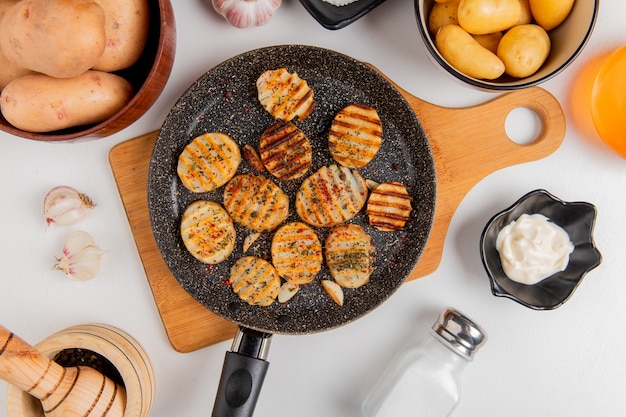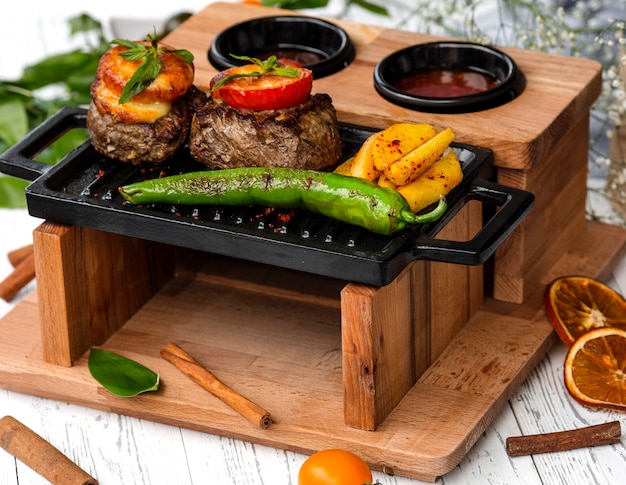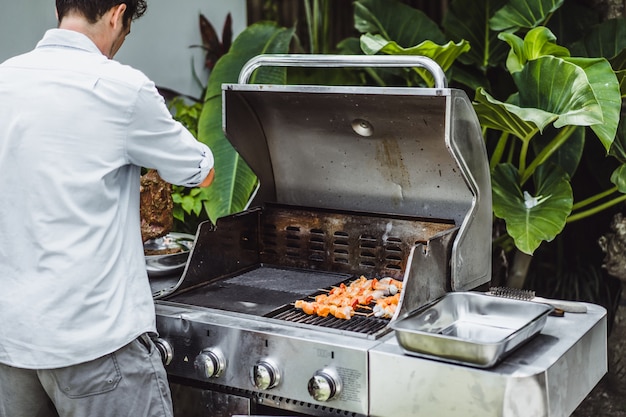The satisfying sizzle of a london broil cooking on the stovetop has always been a culinary delight for me. The aroma that fills the kitchen, the beautiful crust that develops, and the promise of tender, juicy meat inside – it's a simple yet satisfying cooking experience. For a long time, however, I struggled to get my London broil consistently tender and flavorful. It often ended up tough and chewy, a culinary disappointment rather than a delicious meal. But after experimenting with different techniques and marinades, I finally cracked the code to cooking the perfect london broil on the stovetop. Now, I'm thrilled to share my secrets with you, and hopefully, you'll be able to achieve those same results in your own kitchen.
Part 1: Unveiling the Mystery of London Broil

Before we dive into the specifics of cooking a London broil, let's clear up some confusion surrounding this culinary term. "London broil" isn't a specific cut of meat like a ribeye or filet mignon. It's more of a cooking technique that involves marinating a flat, often thin cut of beef, then cooking it quickly over high heat, usually on a grill or in a skillet. This method, despite using tougher cuts, helps make the meat tender and flavorful. The most common cuts used for London broil are top round, bottom round, and flank steak. I personally prefer top round for its richer flavor and marbling, but any of these cuts will do the trick.
Choosing the Perfect Cut
The key to a successful London broil is selecting the right cut of beef. Look for a piece of meat that's at least 1-inch thick for optimal grilling. If it's too thin, it'll dry out quickly, and if it's too thick, it might take too long to cook evenly. You want a nice, substantial cut that will hold up to the high heat and result in a tender, juicy final product.
Part 2: Unlocking Flavor and Tenderness with Marinades

Marination is an essential step in achieving a truly delicious London broil. It allows the meat to soak up the flavors of the marinade, which in turn breaks down the proteins, making the meat more tender. My go-to marinade is a simple blend of olive oil, soy sauce, garlic, ginger, and a hint of red pepper flakes. This combination delivers a balance of savory, umami, and slightly spicy flavors that complement the beef beautifully. But don't feel confined to my recipe! Experiment with different flavors and spices to create your own signature marinade. The possibilities are truly endless.
My Signature Marinade Recipe
To give you a starting point, here's my recipe for a simple, yet effective london broil marinade:
- Combine the Ingredients: In a large bowl, whisk together 1/4 cup olive oil, 1/4 cup soy sauce, 2 minced garlic cloves, 1 tablespoon grated fresh ginger, 1/2 teaspoon red pepper flakes, and a pinch of black pepper. The olive oil adds richness, the soy sauce provides saltiness, the garlic and ginger bring a vibrant flavor profile, the red pepper flakes offer a touch of heat, and the black pepper enhances the overall flavor profile.
- Marinate the Meat: Place your London broil in a resealable plastic bag or a shallow dish, making sure it's completely submerged in the marinade. Refrigerate for at least 2 hours. For maximum tenderness and flavor, marinate overnight.
- Remove and Pat Dry: When you're ready to cook, remove the London broil from the marinade and pat it dry with paper towels. This will help create a beautiful, crispy sear.
Part 3: Mastering Stovetop Cooking

Once your London broil is thoroughly marinated, it's time to unleash the magic of the stovetop. You'll need a heavy-bottomed skillet or a cast iron pan, ideally with a lid, to ensure even heat distribution. My personal preference is a cast iron skillet because it sears the meat beautifully and retains heat exceptionally well.
Prepping Your Pan for Success
The secret to achieving a perfect sear is preheating your pan correctly. Place your skillet over medium-high heat for about 5 minutes. The pan should be hot enough to sizzle when you add a drop of water. This crucial step will create a delicious, crispy crust that seals in the juices and adds a layer of flavor.
Part 4: The Art of Searing London Broil
With your pan screaming hot, it's time for the exciting part: searing the London broil. Carefully place the meat in the skillet and let it sear undisturbed for about 3-4 minutes per side. The goal is to create a beautiful, crusty exterior without overcooking the inside. Avoid overcrowding the pan, as this can hinder the searing process. If you have a thick piece of meat, you may need to cook it in batches.
Achieving a Perfect Crust
Patience is key during the searing stage. Resist the urge to flip the meat constantly. Let it sit undisturbed for a few minutes on each side to get a proper sear. Each side should develop a deep, golden brown color, which is a sign of a perfect crust. Remember, a beautiful sear is not only visually appealing, but it also locks in the juices, resulting in a more flavorful and tender final product.
Part 5: The Importance of Resting
Once you've achieved that irresistible crust, the next crucial step is to let your London broil rest. This allows the juices, which have been pushed to the surface during searing, to redistribute throughout the meat, resulting in a more tender and flavorful dish. I typically let my London broil rest for 10-15 minutes before slicing and serving.
The Science Behind Resting
Resting isn't just about achieving tenderness; it also prevents the meat from becoming dry and tough. As the meat rests, the muscle fibers relax, and the juices become evenly distributed, resulting in a juicier and more flavorful final product. So, even though you may be eager to dig in, take the time to let your London broil rest. Trust me, it's well worth the wait.
Part 6: Slicing for Maximum Tenderness and Flavor
After your London broil has rested, it's time to slice it for serving. For optimal tenderness and easy eating, I recommend slicing it very thinly against the grain. This will allow the flavors to burst in your mouth and make the meat easier to chew. Use a sharp knife to ensure clean, even slices. A dull knife will make slicing difficult and can result in uneven slices, which can affect the overall tenderness and flavor.
Slicing Techniques for Success
Here are a few key slicing tips for achieving the perfect London broil:
- Use a Sharp Knife: A sharp knife is essential for slicing thinly and evenly.
- Slice Against the Grain: Slicing against the grain helps to break down the muscle fibers, resulting in a more tender and easier-to-chew piece of meat.
- Thin Slices: Thin slices allow the flavors to distribute evenly and cook more quickly.
Part 7: Serving Your London Broil with Style
London broil is a versatile dish that can be served with a variety of side dishes to create a complete meal. It's perfect with mashed potatoes, roasted vegetables, a green salad, or even a simple pasta dish. You can also get creative with your side dish choices to complement the flavors of your London broil. For example, a creamy potato gratin would be a wonderful accompaniment, or a vibrant chimichurri sauce would add a burst of fresh flavor.
My Favorite Serving Suggestions
Here are a few of my go-to ways to serve London broil for a truly satisfying meal:
- With a Garlic Butter Sauce: A simple garlic butter sauce complements the rich flavor of the London broil perfectly. Simply melt butter in a pan, add minced garlic, and simmer until fragrant. You can also add a squeeze of lemon juice for a touch of brightness.
- Over a Bed of Greens: Serve slices of London broil over a bed of fresh greens with a light vinaigrette for a refreshing and flavorful meal. Choose greens like arugula, spinach, or romaine lettuce, and add other toppings like cherry tomatoes, cucumbers, and red onions.
- As a Sandwich Filling: Thinly sliced London broil makes an amazing sandwich filling. Add it to toasted bread with your favorite toppings, such as cheese, lettuce, tomato, and a dollop of mayonnaise or aioli.
- As a Stir-fry Ingredient: Cut the London broil into thin strips and add it to a stir-fry with your favorite vegetables and sauce for a quick and flavorful meal.
Part 8: A Quick Guide to cooking times
The cooking time for your London broil will depend on its thickness and your desired level of doneness. Here's a quick guide to help you estimate the cooking time:
| Thickness (inches) | Rare | Medium-Rare | Medium |
|---|---|---|---|
| 1 | 4-5 minutes per side | 5-6 minutes per side | 6-7 minutes per side |
| 1.5 | 6-7 minutes per side | 7-8 minutes per side | 8-9 minutes per side |
| 2 | 8-9 minutes per side | 9-10 minutes per side | 10-11 minutes per side |
These are just estimates. Always use a meat thermometer to check for doneness. The internal temperature for rare meat is 125°F, medium-rare is 130°F, and medium is 140°F. If you don't have a thermometer, you can use the "finger test" by pressing on the center of the meat. If it feels firm and springy, it's rare. If it feels slightly firmer, it's medium-rare. And if it feels firm and solid, it's medium. However, the finger test isn't as accurate as a meat thermometer, so I recommend investing in one if you're serious about cooking meat to perfection.
Part 9: Troubleshooting Common London Broil Challenges
Even with the best techniques, sometimes you might encounter a few bumps in the road while cooking london broil. Here are some common problems and how to troubleshoot them:
Tough London Broil: The Overcooked culprit
If your London broil turns out tough, it's likely because it was overcooked. The key is to cook it just until it reaches the desired doneness and then let it rest. Overcooking will make the meat dry and tough. To avoid this, use a meat thermometer to monitor the internal temperature. Also, ensure you're not overcrowding the pan, as this can cause uneven cooking and potentially overcooking.
Dry London Broil: Resting is Key
Dry London broil is often a result of overcooking or not resting it long enough. To prevent this, make sure to cook it to the desired doneness and then let it rest for at least 10-15 minutes before slicing. Resting allows the juices to redistribute throughout the meat, making it more tender and flavorful.
Unevenly Cooked London Broil: Heat is the Answer
If your London broil cooks unevenly, it could be due to a few factors. Make sure your pan is preheated properly and that the meat is not overcrowded in the pan. It’s also important to ensure the pan is hot enough to sear the meat without overcooking it. Adjust the heat as needed to maintain the proper temperature throughout the cooking process.
FAQs
Q1: Can I cook London broil on the grill instead of the stovetop?
Absolutely! London broil is a fantastic choice for grilling, and many people prefer this method. Just make sure to preheat your grill to medium-high heat and follow the same searing and resting instructions outlined above.
Q2: What are some other marinades I can use for London broil?
The world of marinades is your oyster! You can use a variety of flavors, from sweet and tangy to spicy and savory. Here are a few ideas to get you started:
- Citrus Marinade: Combine orange juice, lime juice, soy sauce, garlic, and ginger. The citrus juices add brightness and acidity, while the soy sauce provides saltiness and umami. The garlic and ginger add a warm, aromatic flavor.
- Teriyaki Marinade: Mix soy sauce, mirin, sake, brown sugar, and ginger. This marinade delivers a sweet and savory flavor profile with a hint of umami. The mirin and sake add sweetness, while the ginger provides a warming and aromatic note.
- Spicy Marinade: Combine chili powder, cumin, paprika, garlic, and lime juice. This marinade offers a kick of heat with a touch of citrus. The chili powder and paprika provide spiciness, while the cumin adds depth, and the lime juice adds brightness.
- Bourbon Marinade: Combine bourbon, soy sauce, Worcestershire sauce, brown sugar, garlic, and black pepper. This marinade offers a smoky, sweet, and savory flavor profile. The bourbon adds a touch of sweetness and smokiness, while the soy sauce and Worcestershire sauce provide umami and saltiness.
Q3: How do I know when the London broil is cooked to my liking?
The best way to check for doneness is with a meat thermometer. Rare meat should reach 125°F, medium-rare is 130°F, and medium is 140°F. If you don't have a thermometer, you can use the "finger test" by pressing on the center of the meat. If it feels firm and springy, it's rare. If it feels slightly firmer, it's medium-rare. And if it feels firm and solid, it's medium. However, the finger test isn't as accurate as a meat thermometer, so I recommend investing in one if you're serious about cooking meat to perfection.
Q4: What can I do with leftover London broil?
Leftover London broil is a great way to make a quick and easy meal. You can slice it and add it to salads, sandwiches, or pasta dishes. It also freezes well for future use. For salads, consider a Greek-inspired salad with feta cheese, olives, and cherry tomatoes. For sandwiches, try a classic London broil sandwich with caramelized onions and melted provolone cheese. And for pasta, toss the London broil with your favorite pasta, marinara sauce, and a sprinkle of Parmesan cheese.
Q5: What are some tips for making a truly tender London broil?
Here are a few tips for achieving ultimate tenderness:
- Marinate it for at least 2 hours, or better yet, overnight. The longer the meat marinates, the more tender it will become. This is because the marinade breaks down the proteins in the meat, making it more tender and flavorful.
- Cook it to the desired doneness and then let it rest for 10-15 minutes. Resting allows the juices to redistribute throughout the meat, resulting in a more tender and flavorful final product. This step is often overlooked, but it's crucial for achieving optimal tenderness.
- Slice it thinly against the grain. Slicing against the grain makes the meat easier to chew and more tender. It also helps distribute the flavors evenly throughout the meat.
With a little practice, you’ll be able to cook the most tender and delicious London broil every time. It’s a dish that’s sure to impress your friends and family. Enjoy!
Everyone is watching

Corn on the Cob: The Ultimate Guide to Perfectly Cooked Ears
Healthy MealsAh, corn on the cob. Just the name evokes images of sunny days, barbecues, and that sweet, juicy flavour that ...

Perfect Pork Roast Oven Cooking Time: A Guide to Delicious Results
Healthy MealsThere's something truly satisfying about a perfectly roasted pork. The aroma alone is enough to make your mout...

Ham Cooking Time: How Long to Bake, Smoke, or Boil a Delicious Ham
Healthy MealsAh, ham. It's a classic, isn't it? A real crowd-pleaser, especially around holidays. And when done right, it'...

Scallops: The Ultimate Guide to Perfect Cooking
Healthy MealsAh, scallops. Those delicate, sweet, and utterly delicious morsels of the sea. They hold a special place in my...

Spaghetti Squash: The Ultimate Guide to Cooking and Serving
Healthy MealsRemember that time you saw spaghetti squash at the supermarket, looking all bumpy and strange, and thought, "W...
